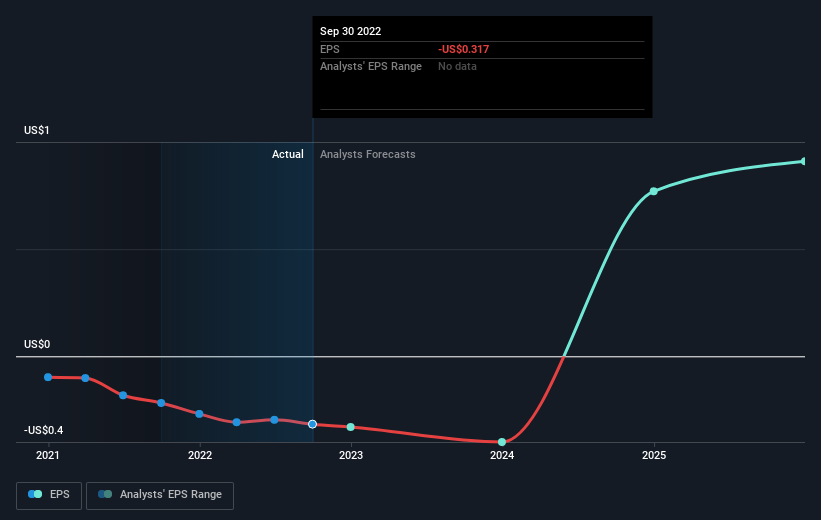MicroVision, Inc.'s (NASDAQ:MVIS) Profit Outlook
We feel now is a pretty good time to analyse MicroVision, Inc.'s (NASDAQ:MVIS) business as it appears the company may be on the cusp of a considerable accomplishment. MicroVision, Inc. develops lidar sensors used in automotive safety and autonomous driving applications. The US$394m market-cap company posted a loss in its most recent financial year of US$43m and a latest trailing-twelve-month loss of US$52m leading to an even wider gap between loss and breakeven. Many investors are wondering about the rate at which MicroVision will turn a profit, with the big question being “when will the company breakeven?” In this article, we will touch on the expectations for the company's growth and when analysts expect it to become profitable.
See our latest analysis for MicroVision
MicroVision is bordering on breakeven, according to some American Electronic analysts. They expect the company to post a final loss in 2023, before turning a profit of US$131m in 2024. Therefore, the company is expected to breakeven just over a year from today. In order to meet this breakeven date, we calculated the rate at which the company must grow year-on-year. It turns out an average annual growth rate of 41% is expected, which is extremely buoyant. Should the business grow at a slower rate, it will become profitable at a later date than expected.
We're not going to go through company-specific developments for MicroVision given that this is a high-level summary, but, take into account that generally a high growth rate is not out of the ordinary, particularly when a company is in a period of investment.
One thing we’d like to point out is that MicroVision has no debt on its balance sheet, which is rare for a loss-making growth company, which typically has high debt relative to its equity. This means that the company has been operating purely on its equity investment and has no debt burden. This aspect reduces the risk around investing in the loss-making company.
Next Steps:
There are key fundamentals of MicroVision which are not covered in this article, but we must stress again that this is merely a basic overview. For a more comprehensive look at MicroVision, take a look at MicroVision's company page on Simply Wall St. We've also put together a list of pertinent aspects you should further research:
Historical Track Record: What has MicroVision's performance been like over the past? Go into more detail in the past track record analysis and take a look at the free visual representations of our analysis for more clarity.
Management Team: An experienced management team on the helm increases our confidence in the business – take a look at who sits on MicroVision's board and the CEO’s background.
Other High-Performing Stocks: Are there other stocks that provide better prospects with proven track records? Explore our free list of these great stocks here.
Have feedback on this article? Concerned about the content? Get in touch with us directly. Alternatively, email editorial-team (at) simplywallst.com.
This article by Simply Wall St is general in nature. We provide commentary based on historical data and analyst forecasts only using an unbiased methodology and our articles are not intended to be financial advice. It does not constitute a recommendation to buy or sell any stock, and does not take account of your objectives, or your financial situation. We aim to bring you long-term focused analysis driven by fundamental data. Note that our analysis may not factor in the latest price-sensitive company announcements or qualitative material. Simply Wall St has no position in any stocks mentioned.
Join A Paid User Research Session
You’ll receive a US$30 Amazon Gift card for 1 hour of your time while helping us build better investing tools for the individual investors like yourself. Sign up here

 Yahoo Finance
Yahoo Finance 
